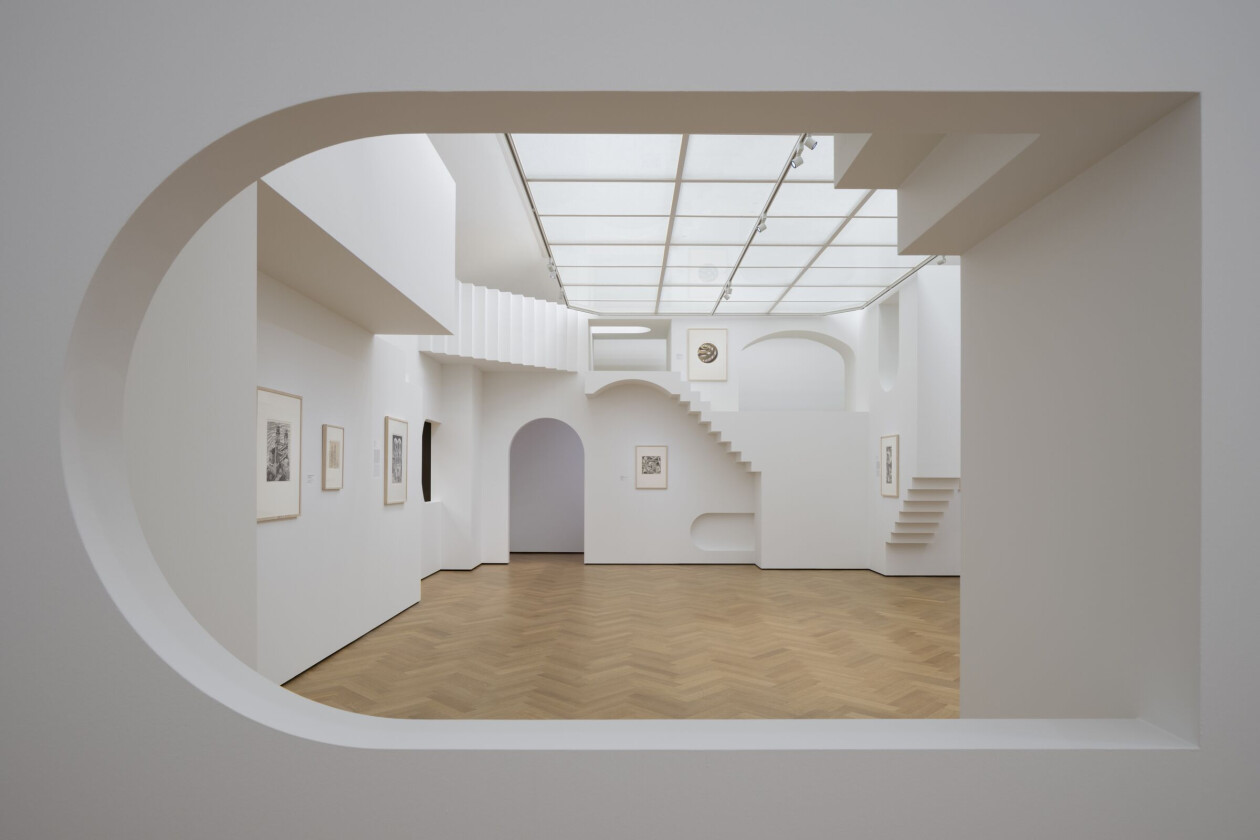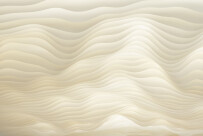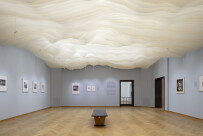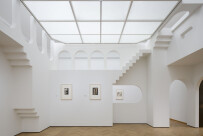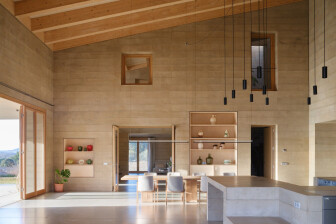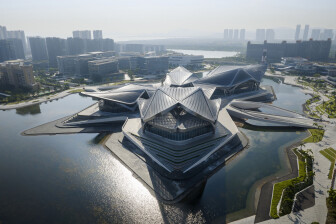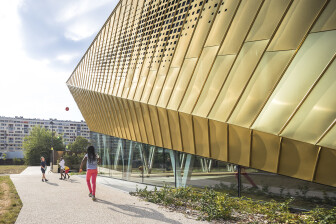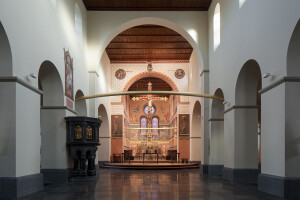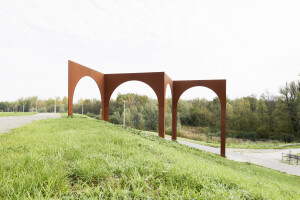In Escher – Other World, a novel exhibition at Kunstmuseum Den Haag (a modern and contemporary art museum in The Hague, Netherlands), visitors can experience the works of Dutch graphic artist Maurits Cornelis Escher alongside installations by Gijs Van Vaerenbergh. Based in Leuven, Belgium, Gijs Van Vaerenbergh is a collaboration between artistic duo Pieterjan Gijs and Arnout Van Vaerenbergh. The studio’s work lies at the intersection of visual art and architecture.
Born in 1898, Escher is famous for artworks centered around optical illusions, impossible architecture, reflections, and the natural world. Today, 125 years after his birth, Escher “still inspires people of all ages the world over, including mathematicians, architects, artists, and art lovers,” says Kunstmuseum Den Haag (the museum). Escher’s work, like that of Gijs Van Vaerenbergh, explores ideas based around reflection, architecture, rhythm, and play. Where Escher’s primary medium was paper, Gijs Van Vaerenbergh specialize in spatial installations. Both Escher and the Belgian artistic duo seek to challenge an audience’s vision and perception.
Escher – Other World offers a cross section of the artist’s body of work set in dialogue with artworks and installations by Gijs Van Vaerenbergh. The exhibition draws inspiration from Day and Night, one of Escher’s most famous prints, and is correspondingly divided into “Day” and “Night”. In Day, “the work of Escher and the spatial installations of Gijs Van Vaerenbergh confront and enhance each other,” explains the museum. In Night, Gijs Van Vaerenbergh “combine sculptures and models with more intuitive and idiosyncratic elements of Escher's work, displayed in a sequence of small, dark painted cabinets.”
Inverse Landscape
“Nature” is the theme of the first main room of the exhibition and includes a display of Escher’s lesser-known landscape prints. The impressive ceiling installation by Gijs Van Vaerenbergh “is an attempt to translate the depth and atmosphere of these landscapes to the museum space,” explains the museum. Made from sheets of hand-cut paper, the installation filters the light, thereby “evoking different topographies such as mountains, dunes, clouds, or waves.”
Possible Architecture
Here, prints that Escher made of cities and buildings are on display, showing the artist’s fascination for architectural details and complex interior spaces. The installation by Gijs Van Vaerenbergh is inspired by a sketch made by Escher in the Mosque-Cathedral (Mezquita) of Córdoba, a place where he encountered an almost infinite number of arcades. The installation comprises a grid of 25 life-size columns and arches.
Two Curved Mirrors
Escher was fascinated by reflections — one of his best-known prints is Hand with Reflecting Sphere. Sharing this fascination, Gijs Van Vaerenbergh positioned two curved reflective plates opposite each other, where the reflections are without end.
Endless Line
The “Infinity” room displays prints by Escher that depict endless cycles and infinite patterns. The artist has been described as an “intuitive mathematician” owing to the fact that his interest in infinity is more conceptual in nature. “Endless Line” is a large sculpture by Gijs Van Vaerenbergh that accompanies these prints. Made using a curved steel tube in the form of a knot, it has no beginning nor end.
Tessellation Maze
Tessellations are “motifs in which the edges of the shapes fit together seamlessly, allowing them to be repeated endlessly,” explains the museum. Escher’s Sky and Water I is an example of this, where birds transform seamlessly into fish. The “Tessellation” room features tessellation prints displayed on a series of transparent walls, organized in the form of an incomplete honeycomb grid.
Impossible Architecture
Escher’s later works play with our perception of the world around us. Utilizing recognizable elements to build impossible configurations, “the logic of the orientation of one element is countered by that of another,” says the museum. Escher’s Relativity print is an example of this. In the “Impossible Architecture” room, Gijs Van Vaerenbergh play with perspectives in a manner that is similar to the print.
Night Section
Gijs Van Vaerenbergh created seven smaller cabinets structured freely around a selection of existing and new sculptures. In “Village Portrait”, the duo play with familiar buildings and architectural features. Here, “classic features are combined to produce a typical village scene that is nevertheless fictional . . . [with] no clearly delineated composition,” explains the museum.
“Wandering Garden model 1/20” is a model of a new public artwork for Arenbergpark in Leuven. An open maze consisting of hundreds of meters of curved transparent fencing, the structure will, in time, be overtaken and transformed by nature.
Escher – Other World is on show at Kunstmuseum Den Haag until 10 September 2023.
